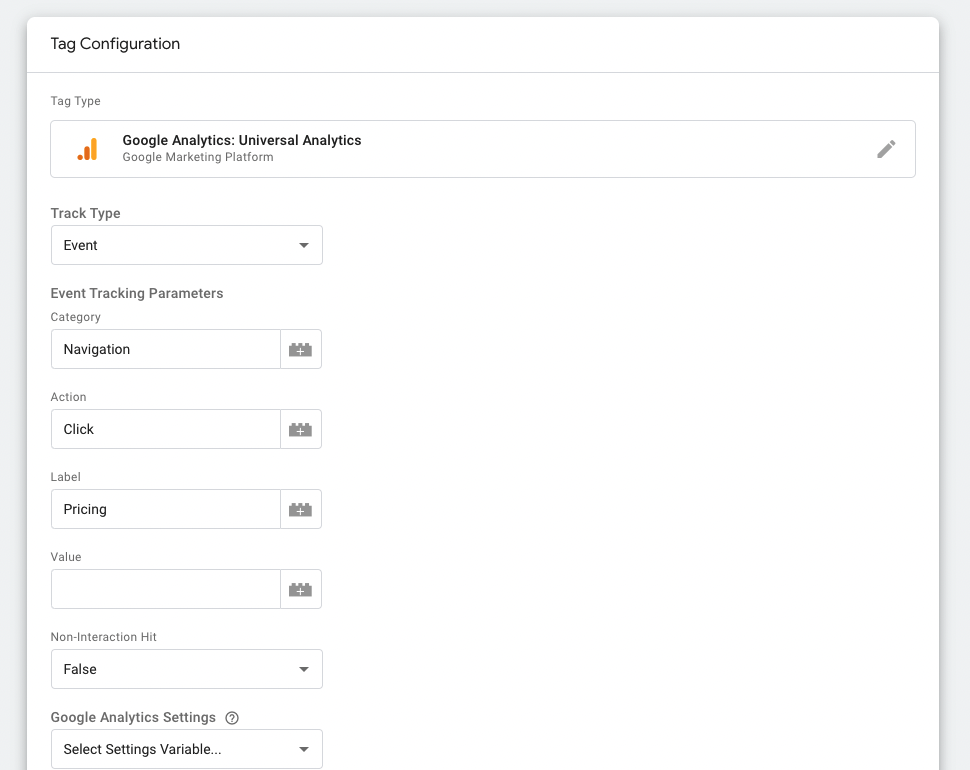6 Simple Techniques For Google Analytics Event Tracking
Our Google Analytics Event Tracking Statements
Table of ContentsIndicators on Google Analytics Event Tracking You Should KnowThe Facts About Google Analytics Event Tracking Uncovered4 Easy Facts About Google Analytics Event Tracking ExplainedSome Known Details About Google Analytics Event Tracking Some Known Details About Google Analytics Event Tracking Unknown Facts About Google Analytics Event Tracking

If you're going to establish event monitoring by hand, after that you're mosting likely to have to include some extra code to the elements you desire to collect information from. The code you're mosting likely to deal with will certainly look something similar to this: There are four elements within that code snippet that you're going to require to define on your own: event, Group, event, Action, occasion, Tag and event, Worth.
As you can see, two of these are needed (group and action) while label and value are optional. All of it depends on the type of details you want communicated back to Google Analytics when a user clicks the defined component (Google Analytics Event Tracking). It will be much simpler to specify these components if you analyse your site and make a decision which elements/actions you wish to track
The Best Guide To Google Analytics Event Tracking
Now, you'll be asked to specify the and and you'll wish to choose from the drop-down food selection that shows up when you click. This will certainly bring up the same event monitoring parts we took a look at earlier, which you'll need to submit. Once you've specified these, you can relocate to the 2nd box and select the trigger that will certainly discharge your tag.
On the following screen, you'll likewise have a field for naming your trigger and, if you click package, you'll see a checklist of the different triggers you can select. In this situation, we wish to choose and after that pick the choice below. After that you'll set the trigger to only terminate when an aspect is clicked with a link which contains the.
Simple - Occasion monitoring! Event tracking offers you a photo of just how users engage with your website and company. Review on as we explore whatever visit here you require to know, including what it is, why you must track occasions, how to handle events information, and various other relevant FAQs you may have.
Some Known Questions About Google Analytics Event Tracking.
You can change between your occasion classifications, actions, and labels in the Leading Occasions report. The Occasion Pages report displays the pages where occasions are activated.
Events in Google Analytics have 4 primary elements. Google Analytics makes use of these codes to track individual interactions and team them right into event records (Google Analytics Event Tracking).
A checklist of the specifications you can track on your website is on the. After inspecting all necessary fields, you can click "X" to shut the window and return to the Introduction menu on the.
Some Known Details About Google Analytics Event Tracking

If you have not done so, you might require to set up a variable in the Google Analytics Setups box. After this, enter your GA tracking ID in the Tracking ID area.
Your ID will certainly be on top Get More Information of the screen. To do this, adhere to the following series of activities: After setting up the fields, choose the "Triggering" area. When configuring your brand-new trigger, click the "+" switch, after that the "pencil" button, after that pick your trigger kind. Tag your trigger and specify the conditions that cause cause firing.
Examine This Report about Google Analytics Event Tracking
When it familiarizes which sections and aspects are guiding clients through your conversion channel, you still won't understand. So, without occasion tracking, GA records will only count brows through as single-page sessions, also if individuals spend a great deal of time on one web page and involve with it dramatically (and a bounce).
Just how does event tracking accomplish this?Single-web page sessions recognized as bounces start and end on the very same web page. Without occasion monitoring, GA will certainly classify a user's go to as a bounce if they don't navigate to one more page, no matter of exactly how they engage with it. A video-rich page can have a higher bounce rate if occasions are not tracked.
Some Ideas on Google Analytics Event Tracking You Should Know
For GA to take event hits right into account when gauging bounce rates, you have to pick "Non-interaction event" as "False" during the GTM arrangement. Setting "occasion objectives" with event Go Here action is a superb method to keep track of customer activities you value highly, such as brand-new lead submissions or click a contact us to action.